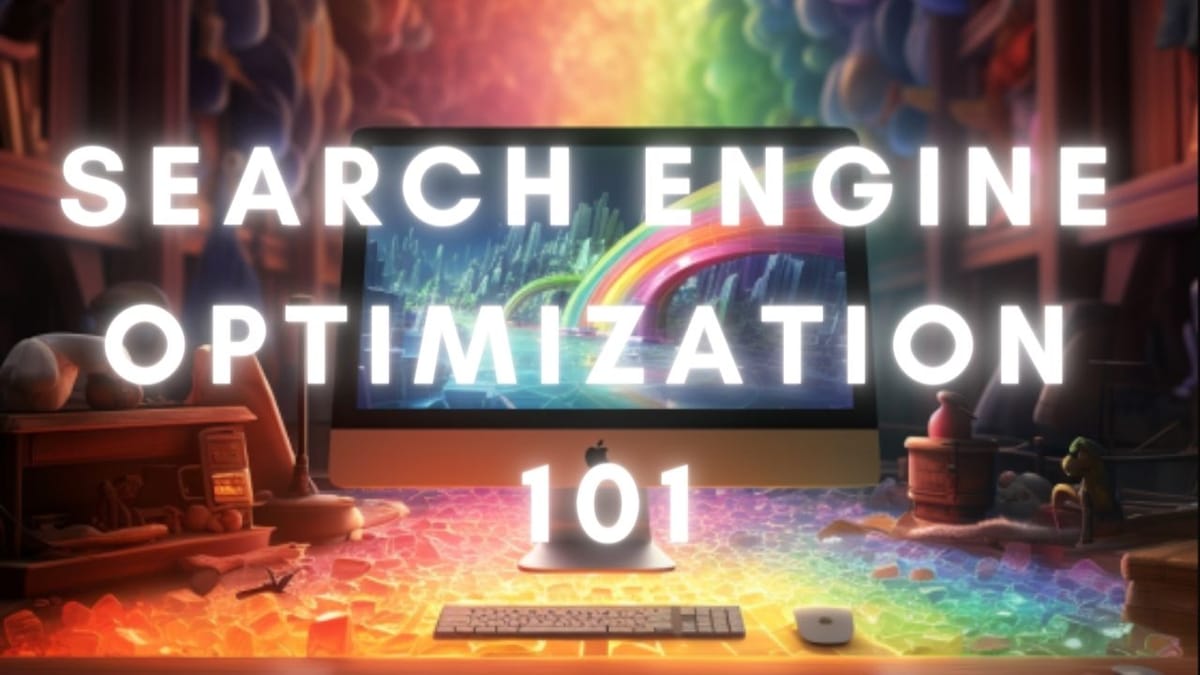Search Engine Optimization 101: How I Navigate My Journey with SEO

- On-Page Optimization:
- Definition: On-page optimization involves optimizing the various elements within a webpage or a group of pages to enhance the overall SEO of the website.
- Key Elements:
- Content: Ensuring high-quality, relevant, and engaging content.
- Keywords: Strategic placement of relevant keywords within the content.
- Metadata: Optimizing meta titles, meta descriptions, and header tags.
- URL Structure: Creating SEO-friendly and user-friendly URLs.
- Internal Linking: Establishing relevant links within your own website.
- Technical SEO (On-Site Optimization):
- Definition: Technical SEO focuses on the technical aspects of a website, ensuring it is easily understood and accessible by search engines.
- Key Aspects:
- Code Optimization: Improving the backend code for better search engine readability.
- Site Structure: Enhancing the structure of the website for better navigation.
- Page Speed: Optimizing load times for improved user experience and search rankings.
- Mobile Friendliness: Ensuring the site is responsive and functions well on mobile devices.
- Crawling and Indexing: Facilitating search engine bots in efficiently crawling and indexing the website.
- Off-Site SEO (Off-Page SEO):
- Definition: Off-site SEO involves activities conducted outside of your website to enhance its optimization.
- Key Strategies:
- Link Building: Acquiring high-quality backlinks from reputable websites.
- Social Media: Leveraging social platforms to promote content and engage with the audience.
- Influencer Marketing: Collaborating with influencers to expand reach.
- Brand Mentions: Building online brand visibility through mentions and citations.
- Online Reputation Management: Monitoring and managing your brand's reputation on the internet.
Understanding and implementing strategies in each of these areas contribute to a holistic SEO approach. It's important to note that SEO is an ongoing process, and staying updated with search engine algorithms and industry trends is crucial for continued success. As you progress through the lessons, you'll likely explore specific tactics and tools associated with each focus area.
The lesson begins by acknowledging the understanding of separate SEO focus areas. It introduces core concepts related to On-Page SEO, specifically focusing on Meta Data. The goal is to enable the ability to comprehend and analyze search results.
The Anatomy of a Search Result is discussed, emphasizing various colored areas in a search result that relate to SEO and On-Page Optimization. These areas collectively form the site's Meta Data, with each having its own name.
Meta Data is defined as data that describes other data, located within the source code of a webpage's head element. The head element serves as a container for Meta Data and is not publicly viewable unless the source code is examined.
Using an example search result for the UC Davis winemaking certificate program, the Title Tag (in blue), website address (in green), and Meta Description are identified. The Meta Description contains text describing the page's content, with bolded words representing keywords matching the search query.
The explanation includes a demonstration that keywords need not appear together to be bolded. Semantic relationships are also considered, as seen in the bolding of related words. The lesson concludes by reinforcing the understanding of Meta Data elements and the ability to define Meta Data.
In summary, the lesson aims to provide a comprehensive understanding of Meta Data, its elements in a search result, and the role they play in On-Page SEO.





